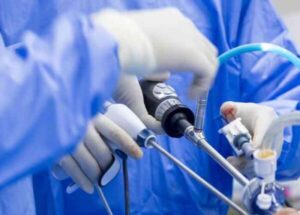
In an environment that has become ever more dependent upon miniature electronics, sensitive medical equipment, high-performance industrial parts, and so forth, the need to protect against harsh environments is absolute. Generally, traditional protective measures fail when they are met with such issues as extreme temperatures, wetness, corrosive chemicals, and even biologic contaminants. Herein, Parylene Coating stands out as a protective technology with a distinctive mix of features to offer a new level of protection.
Perfecting Precision with Conformal Parylene Coatings
Parylene is a generic term referring to a family of polymers of para-xylylene, thin-film conformal coatings deposited by a specialised vapour deposition-polymerisation (VDP) process. In contrast to liquid-based coatings that may clump, bridge, or otherwise leave irregular surfaces, Parylene coatings deposit in a uniform manner even over the most complex shapes. This aspect itself renders it a priceless solution to industries whose precision and total encapsulation are deemed essential.
The Science behind the Superiority: Understanding the Parylene Coating Process
Parylene is magical in its sense of deposition, which is known as the Parylene Coating Process. This is not a spray, dip or brush. However, it is a rather complex process in which a solid dimer is converted to a gaseous monomer that then polymerises to the substrate surface at ambient temperatures.
When identifying the main steps, we should first consider them:
- Vaporisation: this is the first part of the process where a di-para-xylylene solid dimeric raw material becomes vaporised at a specific temperature (roughly 120-150°CC) in a vacuum. This causes the dimer to sublimate to the gaseous state.
- Pyrolysis: The gaseous dimer is passed through a pyrolysis furnace (about 650-690 °C). In this case, the dimer is pyrolysed to two active monomeric radicals, para-xylylene.
- Deposition: Such very reactive monomeric radicals then get released into a deposition chamber, which contains the parts to be coated. More importantly, the temperature of this chamber is maintained at room temperature, and the chamber is vacuumed. The monomers are in a dissolved state at room temperature, and hence they spontaneously polymerise into a pinhole-free, conformal and continuous polymer film on exposure to a substrate surface at lower temperatures.
- Cold Trap: A cold trap (usually -90 °C or colder) is then taken to purge the vacuum system of any unreacted amines and byproducts to leave the process clean and efficient.
There are various essential benefits guaranteed through this distinctive Parylene Coating Process. No thermal stress is imposed on the components since the deposition occurs at room temperature, which makes it suitable for delicate electronics and other thermally sensitive materials.
Hence, it can reach even the tiniest crevice and undercut to give actual conformal coverage devoid of bridging and pooling. The resulting film is so thin, usually on a scale of a few hundred nanometers to tens of micrometres, but so strong and protective.
The Future of Protection: The Enduring Relevance of Parylene Coating
With the increased sophistication of technology in terms of miniaturisation and functioning in more and more hostile environments, there will be greater pressure on producing greater protective solutions. Parylene Coating Service Providers, having its inimitable vapour deposition procedure and incredible characteristics, is well suited to suit these changing requirements.
It is a fundamental technology of the coming electronic, medical and a host of other high-value applications because its unique properties allow it to offer a durable, conformal, biocompatible protection. Revealing the potential of Parylene translates to opening a new level of reliability and durability for the next generations of innovative products.



